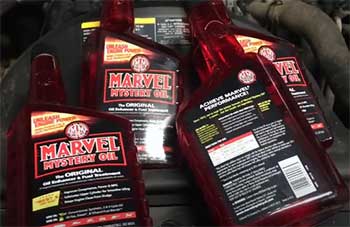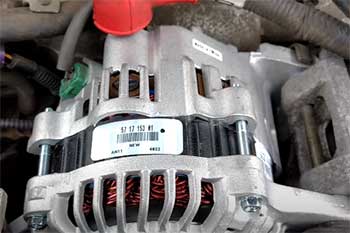If you’re hunting for a suspension upgrade that blends performance, comfort, and affordability, let me tell you—TEIN Flex Z coilovers are calling your name. I’ve been down the rabbit hole of suspension options, and these babies stand out like a neon sign on a dark road.
They’re not just another set of coilovers; they’re a game-changer for anyone who loves their car and wants it to handle like a dream without breaking the bank. Trust me, you’ll want to snag these before your next drive.
Here’s my take on why they’re worth every penny.
My First-Hand Experience With TEIN Flex Z Coilovers

Picture this: I’m rolling up to my garage in my 2008 Subaru Outback XT, a car I’ve babied for years. The stock suspension was fine—until it wasn’t. It felt like I was driving a boat over choppy waves every time I hit a bump.
I’d heard whispers about TEIN Flex Z coilovers from some gearhead buddies, and after months of hemming and hawing, I pulled the trigger. The box arrived, and I couldn’t wait to get my hands dirty.
Installation wasn’t a walk in the park, but it wasn’t a nightmare either. I’d rate it a solid “doable” for anyone with a decent set of tools and a bit of patience. For my Outback, I had to pair these coilovers with some supporting mods—Whiteline roll center kits, sway bars, and control arms—to get the geometry dialed in.
Without those, the drastic drop would’ve thrown everything out of whack. The fronts bolted right up, no fuss, but the rears?
Oh man, adjusting the height was like a wrestling match with the lock collar tucked behind the rotor. I rigged up a spanner wrench and breaker bar combo, and after some cursing, I got it raised about three-quarters of an inch to avoid smacking the bump stops.
Once I hit the road, though? Holy smokes. The difference was unreal. My Outback went from a lumbering beast to a nimble predator. Corners felt tighter, bumps smoothed out like butter, and the ride height gave it that aggressive stance I’d been craving.
I tweaked the damping to about eight clicks from full stiff, and it was like the car was custom-built for me. I’ve even taken it on some twisty backroads, and it hugs the turns like it’s on rails. Sure, it took some elbow grease and extra parts, but the payoff?
Worth it. If you’re on the fence, my experience says jump off and grab these.
Pros of TEIN Flex Z Coilovers

Let’s talk about what makes these coilovers shine. I’ve put them through their paces, and here’s why I’m singing their praises.
- Stellar Ride Quality
First off, the ride quality is downright impressive. Before these, my Outback felt like it was bouncing over every pothole like a trampoline. Now? It’s smooth, controlled, and comfy enough for daily driving.
I’ve heard folks say the same about their GT Wagons and Miatas—night-and-day difference from stock or lowering springs. TEIN’s twin-tube design and damping adjustability (16 levels, to be exact) let you fine-tune it to your liking. Whether you want plush or firm, these deliver.
- Top-Notch Handling
Handling is where these coilovers flex their muscles. My Outback used to lean like it was auditioning for a pirate ship in a storm. With the Flex Z, it’s planted. I’ve pushed it through some spirited drives, and the way it grips corners is addictive.
The camber-adjustable pillow ball mounts up front (on some models) let you dial in that perfect alignment, making it a dream for anyone who loves carving up the roads. It’s not just me—users on forums rave about how their cars feel “on rails” with these installed.
- Affordable Performance
Here’s the kicker: you’re getting Yokohama-made quality without selling your soul. These coilovers hover around the $800-$1,000 mark, which is a steal compared to high-end brands charging triple that.
I was skeptical at first—cheap usually means cheap, right? Wrong. TEIN’s figured out how to mass-produce these without skimping on the good stuff. For the price, the performance punches way above its weight class.
- Customization Options
You like control? These give it to you in spades. The full-length height adjustment means you can slam your ride or keep it subtle, all without messing with spring preload. I went for a moderate drop on my Outback, but I’ve still got room to play if I change my mind.
Plus, that damping knob lets you switch from cushy cruiser to track-ready in a few clicks. It’s like having a suspension that grows with your driving style.
- Durability That Holds Up
I’ve had these on for months now, and they’re still kicking like day one. The green powder coating isn’t just for looks—it’s rust-proofing that laughs at salty winter roads. The high-tensile steel springs haven’t sagged a bit, even with my daily grind.
Other users I’ve chatted with online say theirs have lasted years with no complaints. For something this affordable, that’s a win in my book.
Cons of TEIN Flex Z Coilovers

Nothing’s perfect, and the Flex Z has its quirks. Here’s what I’ve noticed—and what you might want to watch out for.
- Installation Can Be Tricky
Let’s be real: installing these isn’t always a breeze. On my Outback, the rear height adjustment was a pain—those lock collars are sneaky little devils. I’ve read about others struggling with fitment too, like needing Type R rear LCAs for an Integra or extra mods for proper alignment.
If you’re not handy with a wrench, you might need a pro to sort it out, which adds to the cost.
- Limited Damping Range
The 16-level damping is great, but it’s not as wide-ranging as some pricier options. I’ve cranked it full soft for long hauls and full stiff for fun, and while it’s noticeable, it’s not dramatic.
If you’re chasing extreme softness or rigidity, you might feel boxed in. It’s fine for me, but if you’re a tuning nut, it could leave you wanting more.
- Model-Specific Fitment Issues
Here’s a heads-up: these aren’t one-size-fits-all. I got lucky with my Outback matching Legacy GT specs, but others haven’t been so fortunate. One guy ordered for a GT Wagon only to find they fit the non-turbo instead.
Another warned about Integra Type R exclusivity. Double-check your model before you buy, or you might be stuck swapping parts—or swapping coilovers.
- Noise Potential
Every now and then, I hear a faint creak from the rear, especially over big bumps. It’s not a dealbreaker, but it’s there. Some users report rattling collars or squeaky dust boots, and I’ve had to retighten mine once to quiet things down.
It’s not constant, but if you’re sensitive to noise, it might bug you.
Maintenance Tips For TEIN Flex Z Coilovers
Keeping these coilovers in top shape isn’t rocket science, but it does take some care. Here’s what I’ve learned to keep them humming along.
- Regular Cleaning: Road grime is the enemy. After a salty winter or muddy backroad romp, I hit mine with a hose and some mild soap. That ZT coating helps, but dirt can still gum up the threads. A quick scrub keeps them adjusting smoothly—trust me, you don’t want a seized collar when you’re tweaking height.
- Check Tightness Periodically: Those adjustment collars? They can loosen up. I learned this the hard way when I started hearing rattles. Now, I give them a once-over with the spanner wrench every few months, especially after rough drives. Torque them to spec, and you’ll avoid most noise issues.
- Inspect Bushings and Mounts: The pillow ball mounts and rubber bushings take a beating. I peek at mine during oil changes—any play or wear, and it’s time to act. Replacing a worn mount early beats dealing with sloppy handling later. If you’ve got camber plates, keep an eye on those too.
- Adjust Seasonally: I tweak my damping with the seasons—softer for winter comfort, stiffer for summer fun. It only takes a minute, and it keeps the ride tailored to the weather. Same goes for height; I’ll raise it a smidge if snow’s coming. Play with it—you’ll find your sweet spot.
- Lubricate Threads: The threads on these are slick thanks to that Teflon coating, but a little extra love doesn’t hurt. I dab some anti-seize on them every six months or so. It’s overkill, maybe, but it makes adjustments a breeze and fights corrosion. Better safe than sorry, right?
Comparison of TEIN Flex Z Coilovers With Other Brands
Alright, let’s put TEIN Flex Z coilovers head-to-head with some other players in the game—BFO Coilovers, TruHart Coilovers, and Rev9 Coilovers. I’ve dug into what makes each tick, chatted with folks who’ve run them, and compared notes to my own TEIN experience.
Here’s how they stack up, broken down so you can see exactly where the Flex Z shines—or doesn’t.
- TEIN Flex Z Vs. BFO Coilovers
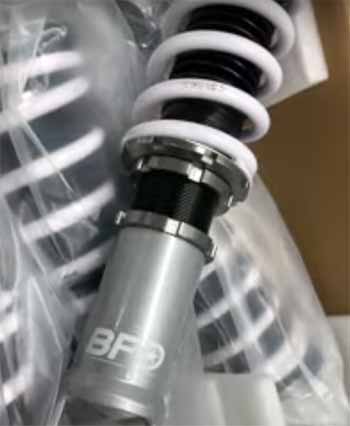
BFO Coilovers are the budget king, often landing around $500-$600.
I rode shotgun in a buddy’s Civic with these, and they’re stiff—great for a slammed look, but the ride?
Ouch.
My Outback with TEIN feels like a luxury liner by comparison; the Flex Z’s twin-tube design and 16-level damping smooth out bumps way better than BFO’s basic monotube setup.
BFO offers height and damping adjustability too, but the range feels narrower, and the build quality—think thinner steel and cheaper coatings—doesn’t scream longevity.
TEIN’s Yokohama craftsmanship costs more (around $800-$1,000), but you’re paying for refinement BFO can’t touch.
For daily driving, I’d pick TEIN every time.
- TEIN Flex Z Vs. TruHart Coilovers
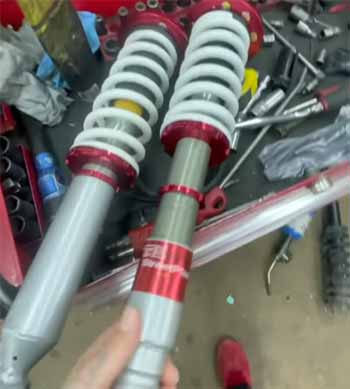
TruHart’s another wallet-friendly contender, usually $600-$700.
I helped a friend bolt these onto his Miata, and they’re decent—height adjustable, with basic damping control.
But here’s the rub: they’re bouncy.
Where my TEIN Flex Z keeps my Outback planted, TruHart felt like it was still settling after every dip.
The Flex Z’s pillow ball mounts and tighter tolerances give me sharper handling, while TruHart’s simpler bushings lag behind.
Build-wise, TEIN’s rust-proof coating and high-tensile springs outclass TruHart’s bare-bones approach.
If you’re just chasing a drop, TruHart’s fine—but for performance that lasts, TEIN’s got the edge.
- TEIN Flex Z Vs. Rev9 Coilovers
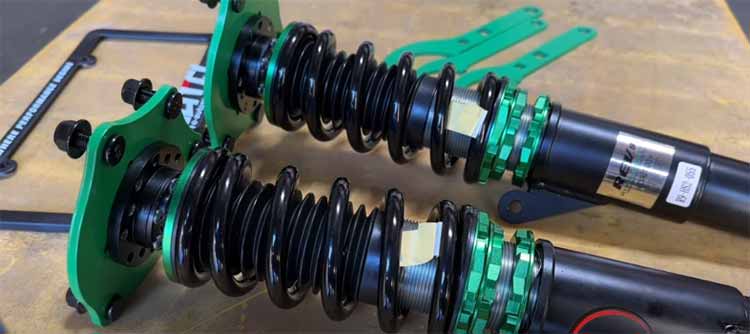
Rev9 Coilovers sit closer to TEIN’s price range, about $700-$900, and they’ve got a fanbase for good reason. I test-drove a GTI with Rev9s, and they’re sporty—32 damping levels give you more tweakability than TEIN’s 16.
Cornering was crisp, but the ride felt harsher than my Flex Z setup, especially over potholes. TEIN’s twin-tube shocks soak up imperfections better, while Rev9’s monotubes prioritize stiffness.
Quality-wise, they’re neck-and-neck—both use solid materials, though TEIN’s Japanese origin gives me a slight trust bump over Rev9’s mixed manufacturing roots. If you’re a track junkie, Rev9 might tempt you; for street comfort with punch, I’m sticking with TEIN.
So, what’s the verdict?
TEIN Flex Z strikes a killer balance—smoother than BFO’s budget brutality, more polished than TruHart’s bare essentials, and comfier than Rev9’s track-leaning edge. Priced in the middle, it’s not the cheapest, but it’s the one I’d trust for my daily grind and weekend thrills.
You get what you pay for, and with TEIN, that’s a whole lot of bang for your buck.
Frequently Asked Questions (FAQ)
Yes, mostly. TEIN’s still got its roots in Yokohama, Japan, where the Flex Z line is manufactured. That said, some of their lower-end stuff—like the Basis Z—gets assembled in China to cut costs. For Flex Z, you’re getting that JDM quality, which is a big part of why I trust them.
You bet they are. You’ve got 16 levels of damping to play with, plus full-length height adjustment via the shock body. I’ve tweaked mine for everything from comfy cruises to tight cornering—it’s like a choose-your-own-adventure for your suspension.
These bad boys hail from Yokohama, Japan. TEIN’s kept the Flex Z production in-house, unlike some of their cheaper lines that get outsourced. That “Made in Japan” stamp was a big selling point for me—quality you can feel.
They can be. Out of the box, they’re firmer than stock, but dial the damping down, and they’re surprisingly cushy. I’ve set mine soft for long drives, and it’s comfier than my old setup. Not pillow-soft like luxury coils, but for performance coilovers, they’re pretty forgiving.
Conclusion: Get Your Hands On TEIN Flex Z Coilovers
After months of living with TEIN Flex Z coilovers, I’m sold—and you should be too. They’ve transformed my Outback into a ride that’s equal parts fun and functional, all without emptying my wallet.
The pros outweigh the cons by a mile, and with a little TLC, they’ll keep you grinning for years. Don’t sleep on these—grab a set, hit the road, and feel the difference for yourself.
You won’t regret it.
